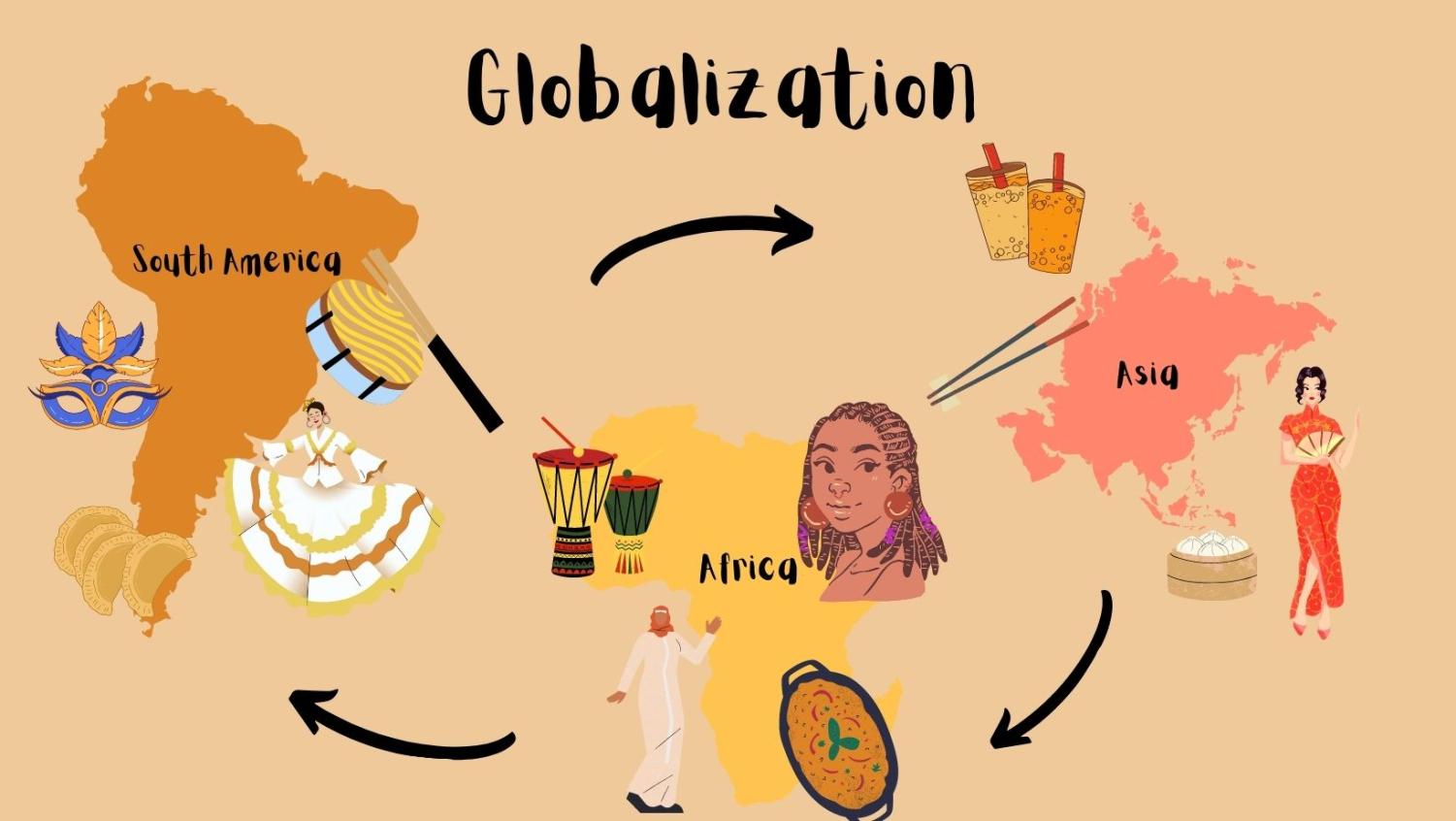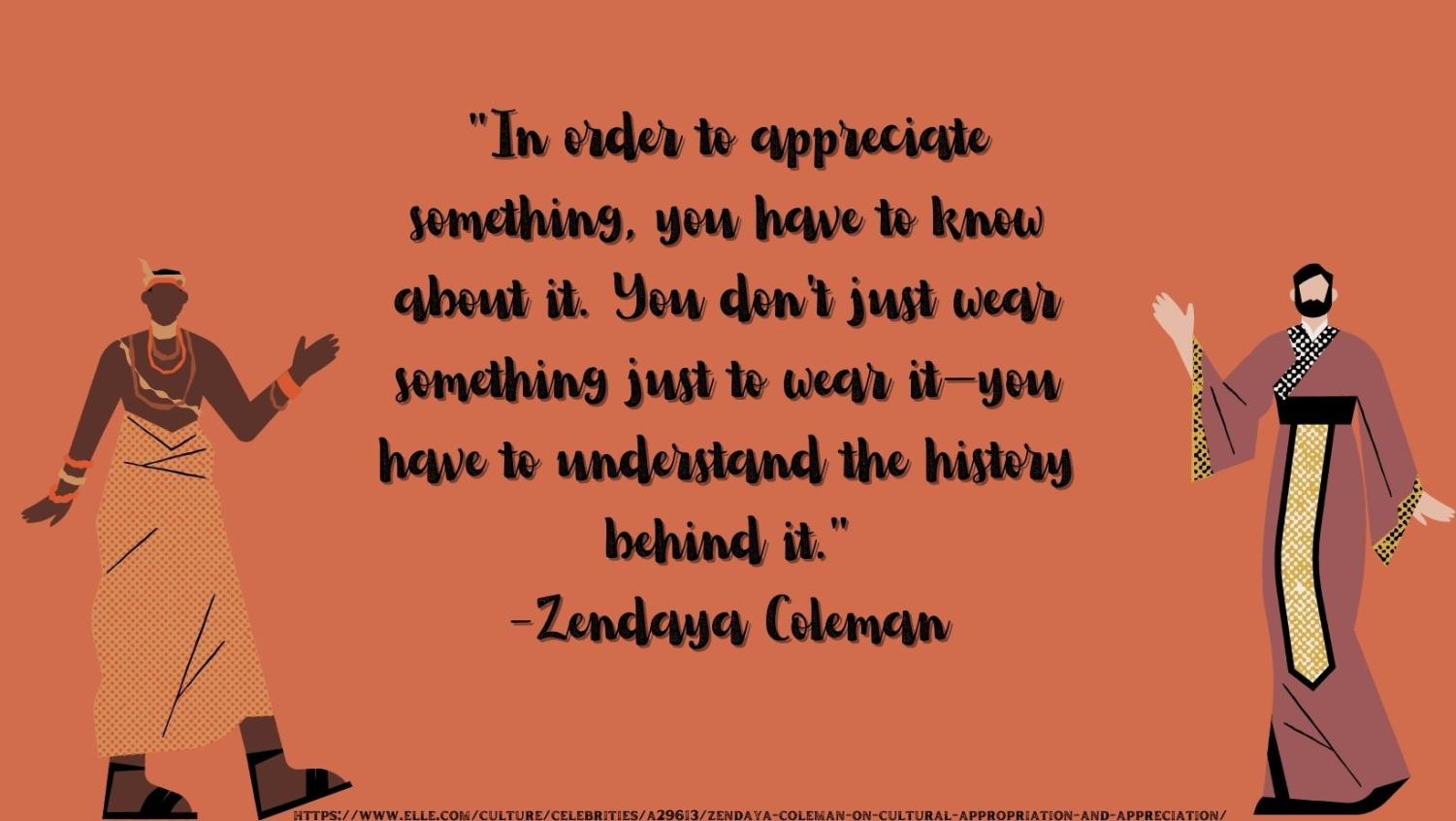Pirating the POCs
April 19, 2022
From waist beads to turbans, people of color’s (POC) cultures continue to melt into different environments and communities. Although certain individuals want to appreciate the elements of these cultures, others find it disrespectful. Society should take caution when wearing accessories from another person’s culture.
Cultural appropriation refers to the act of taking an aspect of a certain culture and using it for one’s own interest. It means that someone uses elements of someone else’s culture for pure enjoyment or personal gain without understanding the true meaning of it. For example, one could consider a non-Asian woman wearing chopsticks in her hair offensive or disrespectful.
“The first time I faced cultural discrimination and appropriation in school was when others would have prénotions of my personality or culture based on movies or what stereotypes told them. Also when someone would ask if I did something such as henna but did not understand the true meaning behind it. When I was younger it used to make me feel uncomfortable.” magnet junior Neeve Ram said.
POC cultural appropriation connects back to the concept of globalization. Globalization refers to the influence of normal ideas by the diffusion of commodities and ideas, reflecting a standardization or exchange of cultural expressions around the world. In simple words, globalization means that cultures spread from one place to another. However, cultural appropriation only stems from this concept. Terms such as syncretism and assimilation also tie back to the concept of globalization.

Waist beads became a popular topic of debate on the internet over recent months. While some believe that everyone can wear waist beads freely, others feel that only African women should wear them. Originally, women from the Yoruba tribe in Africa created waist beads. However, African women in various tribes wear waist beads for multiple different reasons. Traditionally, African women wear waist beads for a multitude of reasons such as religion and representing femininity. However, any woman can wear waist beads, as they promote fertility, good feminine health, wealth and vitality.
Western sexualization and cultural appropriation of qipaos also became a popular topic over the past decade. As a key part of East Asian culture, women wore the qipao to liberate their femininity. Currently, East Asian women wear the qipao to weddings, festivals, and a host of other important cultural events. However, as a result of the western sexualization of qipaos, popular American clothing stores such as FashionNova and Forever21 sell revealing qipaos. Any woman can wear a qipao, as long as she wears it with respectful intentions and wears the appropriate kind. An appropriate qipao contains a Mandarin collar, pankou buttons, the ‘large front’, the edging, sleeves, the length, and side slits. A qipao should also fit below the knee or mid-calf length.

“You can go about it as cultural appreciation or cultural appropriation,” actress and singer Zendaya said.
On multiple occasions, celebrities disrespected Indian culture by sexualizing cultural outfits and wearing garments disrespectfully. Kim Kardashian wore traditional Indian jewelry with a gray crop top and a tight-fitting skirt, then proceeded to post these pictures online. She disrespected and appropriated Indian culture by portraying the jewelry in an erotic and sexual light. The jewelry that Kardashian appropriated represents wealth, status, femininity, and power in the Hindu culture in India.
Box braids, cornrows, and locs always played a major role in the Black community. Dating back to the days of slavery, enslaved people used hairstyles such as cornrows as a communication system to freedom. Enslaved Africans would braid their hair in the shape of cornfields that informed other slaves on how to escape. Nowadays, Black women argue that only they should wear these hairstyles. In the past two decades, white women began wearing these historically black hairstyles, which not only damage caucasian hair types but strip black women of something they owned for centuries. People continuously praise caucasian women for culture appropriating styles that Black women created. Black women and men alone should rock cornrows and box braids since they possess a great deal of significance in the Black community.
In 2016, Justin Bieber posted a picture of his new locs on Instagram. Bieber immediately faced backlash over his new hairstyle because, for years, Black people faced hate for locs. Bieber’s new hairstyle as well as his response perfectly encapsulated the epitome of cultural appropriation. Bieber ignorantly emphasized that he wore his new hairstyle to promote and appreciate the Black community. However, he did the exact opposite. Locs possess religious, cultural, and social importance in African countries dating back to the ancient ages. Ancient Egyptian tombstones depict locs worn by pharaohs. When Bieber debuted his new locs, he showed his ignorance of their importance as well as his blatant disregard for them.
I feel you should ask questions and not use something like a fashion trend. I would say that you should ask questions to someone who is of the culture to properly understand the significance behind certain things. Google is always there to help and if there is a specific question then ask before you do something to maybe offend another. As some cultural aspects are closer to some than others,” magnet junior Neeve Ram said.

A true line separates those who take time to understand and appreciate other cultures and those who inadvertently appropriate them. Although individuals should respect parts of every culture, a handful of people believe that everyone should share their culture, as long as one understands the true meaning of the culture they take from. If they do it for fun, attention, or in a disrespectful manner, it then becomes cultural appropriation. While in Japan in 1986, the late Princess Diana wore an appropriate kimono. Princess Diana’s kimono did not possess any disrespectful messages toward Japanese Culture. An appropriate kimono should correlate with the seasons, and align with the ground and the left side should cover the right side.
The ever-present cloud of cultural appropriation continues to hover over POC communities. Each ethnicity possesses its own unique culture that represents its background. Yes, people should share and accept aspects of other cultures, but no they should not misuse and appropriate them.
